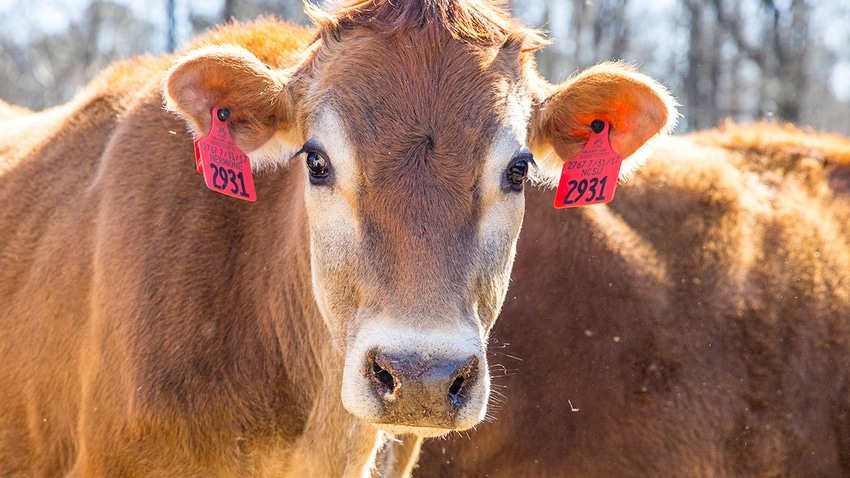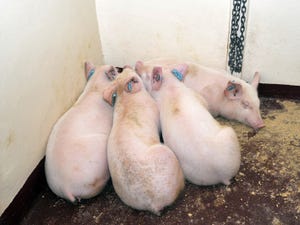NC State model predicts cross-species contamination risk
Researchers found identifying the top 3% of hub farms and focusing biosecurity efforts there dramatically reduced number of secondarily infected farms.
March 15, 2022

A new mathematical model from researchers at North Carolina State University reveals the high risk of cross-species disease spread on farms with more than one type of livestock. According to the model, biosecurity efforts focused on the top 3% of farms in a particular contact network may significantly cut back cross-species disease dissemination.
"Most disease-prevention programs focus control and prevention measures on one species; however, it is well known that cross-species transmissions occur," says Gustavo Machado, assistant professor of population health and pathobiology at NC State and corresponding author of a paper describing the work. "For example, foot-and-mouth disease can be transmitted among all ungulate species. And all of these farms are connected – they sell and share animals all the time."
Machado and postdoctoral researcher Nicolas Cardenas created a stochastic mathematical model that described the "connectedness" of farms in one area of Southern Brazil. The model included three years' worth of data for a population of 90 million animals and traced over 1.6 million animal movements between farms, such as animal sales and grow-finishing movements.
The model simulated disease outbreaks that began in cattle, swine, and small ruminants (i.e., sheep or goats), respectively, in order to determine the likelihood of cross-species contamination in each case. They ran 1,000 distinct simulations 100 times each to identify all possible outbreak routes.
"It doesn't matter where the outbreak starts, the entire farm – and the larger farm network in a community – is at risk," Cardenas says. "We ran simulations with diseases that are transmitted by direct contact, and modeled outbreaks that started on both single-species and multi-host farms to see if there was a difference in outcome, and there wasn't."
However, Cardenas says, knowing how farms interact with each other and focusing biosecurity and prevention efforts on the most interconnected farms does have an impact.
"The model allowed us to construct a contact network between all of the farms in the study," Cardenas says. "The farms with the greatest numbers of contacts, or hub farms – regardless of how many animals move between them – are the focal points for disease transmission."
The researchers found that identifying the top 3% of hub farms and focusing biosecurity efforts there dramatically reduced the number of secondarily infected farms.
"The model shows us a number of interesting points," Machado says. "First, it shows us that we cannot look only at the immediately affected species during an outbreak, as all of the animals are at risk. Second, if you target biosecurity efforts toward the top ~3% of the most networked farms you can reduce transmission on those farms and protect other species as well.
"We hope that this model can help public health officials and farmers target disease counteraction efforts more efficiently and cost-effectively."
The work appears in Veterinary Research and was supported by the Fundo de Desenvolvimento e Defesa Sanitária Animal (FUNDESA-RS) under award number 2021-1318.
Source: North Carolina State University, which is solely responsible for the information provided, and wholly owns the information. Informa Business Media and all its subsidiaries are not responsible for any of the content contained in this information asset.
You May Also Like



